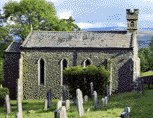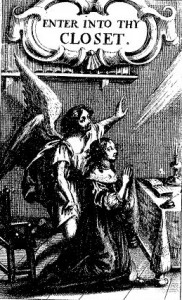 ‘I was moved to open to the people that the steeple-house, and the ground whereon it stood were no more holy than that mountain’. These words, spoken by the Quaker George Fox in 1652, suggest just one of the ways in which early modern religion was shaped by the location in which it was generated, celebrated, experienced, or challenged, whether that be (as here) Firbank Fell in Cumbria, or the churches and chapels, cities and villages, private homes and royal courts, national assemblies and congregational meetings, in which early modern religion was formed and reformed. Dr. Naya Tsentourou, who joined the Early Modern Team in October 2013, adds research on Milton and devotional space to our work in this field. Early modern research projects at Lancaster which investigate the intersection between religion and its locations, include:
‘I was moved to open to the people that the steeple-house, and the ground whereon it stood were no more holy than that mountain’. These words, spoken by the Quaker George Fox in 1652, suggest just one of the ways in which early modern religion was shaped by the location in which it was generated, celebrated, experienced, or challenged, whether that be (as here) Firbank Fell in Cumbria, or the churches and chapels, cities and villages, private homes and royal courts, national assemblies and congregational meetings, in which early modern religion was formed and reformed. Dr. Naya Tsentourou, who joined the Early Modern Team in October 2013, adds research on Milton and devotional space to our work in this field. Early modern research projects at Lancaster which investigate the intersection between religion and its locations, include:
- Early Quakers in Northwest (Hilary Hinds, Alison Findlay and Meg Twycross) Visit the Project Website
- Anna Trapnel’s Report and Plea (1654): a new edition, ed. Hilary Hinds
- ‘Power and Transformation in the Early Modern Prayer Closet’, Dr Naya Tsentourou.

This essay submitted for Transforming Early Modern Identities , ed. Sarah Lewis and Emily Sherwood, (submitted to Palgrave). Devotional space was often a controversial matter in post-Reformation England. Milton responded to Eikon Basilike, a meditative work attributed to Charles I in the aftermath of his execution, by exposing the king’s prayers in a public arena: for Milton, Charles ‘should have shut the dore, and pray’d in secret, not heer in the High Street. Privat praiers in publick, ask something of whom they ask not, and that shall be thir reward’ (CPW, 3:456).’ Between the high street and the closet, the public and the private, where early modern subjects prayed and worshiped was thought to determine the authenticity and ultimately the success of their petition to God. In this context, early modern prayer closets, spaces of physical and spiritual isolation in seventeenth century homes, emerge as significant locations for the study of religion. This project is interested in how the prayer closet’s shut door facilitated or obscured one’s relationship to God.
- ‘Prayer, Performance and Community in Early Modern Drama’ Alison Findlay in Prayer and Performance, ed. Joe Sterrett (currently submitted to Cambridge University Press)
